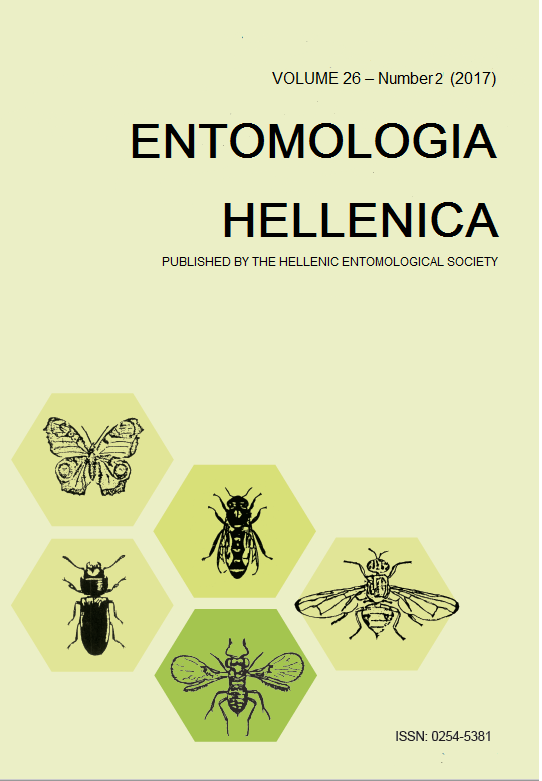Back-yard medfly is a key factor in area-wide management in Southern Europe. Data from Attiki Greece, 38

Abstract
A twelve month Mediterranean fruit-fly, medfly, Ceratitis capitata (Wiedemann) (Diptera: Tephritidae) record was kept in a small back-yard with 8 medfly host fruit trees in a neighborhood about 7 km from the center of Athens, from November 2015 till November 2016. Similar small back-yards exist in the whole area. Large commercial host tree plantations exist at about 80 km west of Athens, while backyards with fruit trees exist in villages or small towns in-between. McPhail yellow bottom traps (one per tree) with Biolure (3 separate dispensers of ammonium acetate, trimethylamine, and putrescine) and a water solution of 1.5% sodium tetraborate and a few drops of kitchen detergent were used. Traps were examined approximately every week and water solution renewed. The Biolure dispensers were renewed every 3-4 months. On the average (medflies per tree-trap per day) 1.4 flies were trapped in November, less than 1 were trapped between December and early May, except mid-April when 1.7 flies were trapped.
From June till October high records were detected. In June-July records up to over 52.7 flies were observed (highest population peak in the year), while in September October records up to 34.3 flies were observed (second highest population peak in the year). The sex ratio of trapped flies was almost always in favor of females, usually between 60-100%. An increase of medfly catches was always detected following Biolure dispensers renewal. In case Area-wide SIT
applications are considered, the reproductive behavior of released flies in these special environments must be well investigated.
Article Details
- How to Cite
-
Economopoulos, A. P., & Rempoulakis, P. (2018). Back-yard medfly is a key factor in area-wide management in Southern Europe. Data from Attiki Greece, 38. ENTOMOLOGIA HELLENICA, 26(2), 29–36. https://doi.org/10.12681/eh.16517
- Issue
- Vol. 26 No. 2 (2017)
- Section
- Articles

This work is licensed under a Creative Commons Attribution-NonCommercial-ShareAlike 4.0 International License.
Authors who publish with this journal agree to the following terms:
Authors retain copyright and grant the journal right of first publication with the work simultaneously licensed under a Creative Commons 4.0 license.
Authors are able to enter into separate, additional contractual arrangements for the non-exclusive distribution of the journal's published version of the work (e.g. post it to an institutional repository or publish it in a book), with an acknowledgement of its initial publication in this journal. Authors are permitted and encouraged to post their work online (preferably in institutional repositories or on their website) prior to and during the submission process, as it can lead to productive exchanges, as well as earlier and greater citation of published work.


